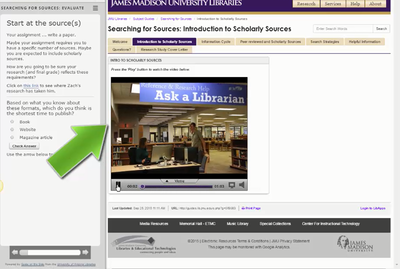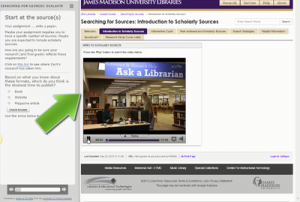Online/blended learning pedagogical practices are organized into three categories: Course Content, Interaction and Assessment. Interaction is crucial in creating an engaging and effective online learning environment. It helps bridge the gap between the digital environment and the traditional classroom, making learning more accessible, interactive, and effective. Check out our articles on strategies for improving interaction inside courses.
Five Types of Interaction in Online Learning:
- Learner-Instructor:
- Direct communication between students and instructors, such as through discussion forums, emails, live chats, video conferencing, and feedback on assignments. This type of interaction helps clarify concepts, provide guidance, and offer support.
- Direct communication between students and instructors, such as through discussion forums, emails, live chats, video conferencing, and feedback on assignments. This type of interaction helps clarify concepts, provide guidance, and offer support.
- Learner-Learner:
- Engagements among students, which can include group discussions, peer reviews, collaborative projects, and study groups. This interaction fosters a sense of community, encourages knowledge sharing, and enhances critical thinking skills.
- Engagements among students, which can include group discussions, peer reviews, collaborative projects, and study groups. This interaction fosters a sense of community, encourages knowledge sharing, and enhances critical thinking skills.
- Learner-Content:
- The ways in which students engage with the course material, such as reading texts, watching videos, participating in simulations, completing quizzes, and interactive modules. This interaction is crucial for understanding and retaining course content.
- The ways in which students engage with the course material, such as reading texts, watching videos, participating in simulations, completing quizzes, and interactive modules. This interaction is crucial for understanding and retaining course content.
- Learner-Interface:
- The interaction between students and the learning platform or technology used to deliver the content. This includes navigating the learning management system (LMS), using tools for assignments, accessing resources, and submitting work.
- The interaction between students and the learning platform or technology used to deliver the content. This includes navigating the learning management system (LMS), using tools for assignments, accessing resources, and submitting work.
- Instructor-Content:
- The creation and curation of course materials by the instructor, including lectures, multimedia resources, assessments, and discussion prompts. This interaction shapes the learning experience and ensures that content is relevant and engaging.
Featured Articles
Apply Motivational Design Principles to Create Engaging Online Modules
When developing asynchronous modules, using a motivational design model and appropriate technologies allows one to replicate a dynamic, active learning classroom environment.Read More
Apply Motivational Design Principles to Create Engaging Online Modules
When developing asynchronous modules, using a motivational design model and appropriate technologies allows one to replicate a dynamic, active learning classroom environment.Read More
Recent Articles
- Offering Asynchronous Online Discussions to Increase Value in Face-to-Face ClassroomsThis strategy demonstrates the student learning experience value-add by replacing some of the traditional assignments with online asynchronous discussion boards in the face-to-face classroom.
- Employing a Multi-Disciplinary Approach to Improve a Graduate-Level Health Care Informatics Epidemiology CoursePeer review of assignments encourages social cohesion among students, promotes a better understanding of course material, and develops soft skills. In the most recent National Association of Colleges and Employers (NACE) report, employers are most commonly seeking recent graduates who demonstrate the ability to problem solve and who effectively work on a team (Gray, 2024). Peer review assignments can help students practice these skills. Teaching students to provide quality feedback on peer assignments also allows instructors more direct student engagement opportunities since grading time is reduced (Hattie, 2022). This technique can be adopted for courses in any discipline and provides excellent practice for students to apply their knowledge of core concepts.
- Instructor Self-Assessment Journal to Raise Positive Student PerceptionsInstructor Self-Assessment Journal (ISAJ) aims to create a positive learning environment that is necessary for student success. Our proposed Instructor Self-Assessment Journal aims to boost Positive Student Perceptions.
- Promote Social Goal Setting in an Asynchronous Icebreaker and Follow-up ActivitiesKick off an online course with an asynchronous goal-setting icebreaker where students can form community and intentional goals for the course. This activity can be extended with goal progress check-ins throughout the semester for continued engagement.
- Enhancing Experience through the Integration of Demonstrations and SimulationsStudents in an online environment may have a disconnection between their classmates and teachers (Gray & DiLoreto, 2016), leading to a perception of dissimilar experiences compared to students in a face-to-face classroom.
- Using VoiceThread to Assess and Provide Feedback in a Pronunciation CourseVoiceThread, a cloud-based platform, is used to assess and provide…
- Support Students in Online Discussions by Clarifying and Demonstrating Expectations, and Providing Guidance in FeedbackOnline discussion forums provide students an opportunity to engage with…
- Encourage Transparency and Accountability for Group Oral PresentationsDescription Developing oral communication skills is included as a learning…
- Five Quick Content Revisions to Enhance Online Student Experience Before the Course StartAdult online learners are often non-traditional learners. They juggle multiple…
- Use Shared Templates to Enhance Collaborative Online Learning and Skill BuildingOnline learning activities using shared documents to promote collaborative work…
- Lightboard Lecture Pedagogy and Best PracticesFaculty seeking a dynamic lecture-recording method for their online, hybrid,…
- Build Community Through Food PoetryBuilding community through food poetry is a strategy that can be applied across curriculum and for online and blended teaching.
- Replace Traditional Textbooks with Technology Resources through Trebian’s ModelCollege textbooks provide highly specialized content and are expensive whether…
- Leveraging Lecture Passwords to Humanize your Online CourseShifting from a lecture password to a lecture question presents an opportunity to bridge the gap of lost humanization due to video scanning behaviors.
- Capture Student Attention with a Digital Writing MakeoverAs an online instructor, do you feel frustrated when students…
- Implement “Biographical Disruption” as an Anchor for Critical Reflection in Online LearningStructured anchors and frameworks for discussion and reflection must be implemented to increase levels of discourse, interaction, and relationship.
- Who We Are: Building Community in an Online Class, One Meme at a TimeAnyone involved in an online course, whether that person is…
- Metaverses a Platform for Teaching Communication CoursesThe metaverse can be utilized in various platforms such as…
- Foster Individualized Connections to Build Relational Humanity Between Faculty and StudentFaculty who teach asynchronously online must build-in purposeful engagement activities…
- Incorporate a Holistic Educational Model [Policies-Pedagogy-Dialogue-Caring] to Promote Student Success and RetentionStudents enrolled in university programs were affected significantly in their ability to remain focused on meeting program expectations while contending with pandemic-induced challenges. Faculty in a school of nursing responded by developing a four-pronged model with initiatives to support students and foster their success.
- Maintain a Collaborative List of Key Course Terms on Google DocsConrad and Donaldson note that the shift from the instructor…
- Facilitate Collaborative Performance-Based Tasks in a Synchronous Course MeetingDescription Learners in synchronous course meetings benefit from the opportunity…
- Set the Stage with a Start Here Section: Orient Students to Course Purpose, Structure, and ExpectationsMeeting the needs of students in online courses is essential…
- Facilitate the think-pair-share teaching strategy virtually with breakout roomsWith instruction shifting from face-to-face to online modalities, instructors at…
- Create (and Answer) a Learner Information Survey to Initiate Belonging, Presence, and CommunityIn an online or technologically-enhanced course, one important challenge is…
- Use Self-Evaluation and Instructor Feedback in Group Discussions to Enhance Participation in Large-Enrollment CoursesDiscussions in asynchronous online courses provide an opportunity for students…
- Transitioning to Online Facilitation of Immersive VR SimulationsEducation in nursing has evolved from traditional classroom and clinical…
- Digital #Powerups: Hashtags to Empower Higher-Order Student Engagement in Online DiscussionsDescription The digital powerups strategy provides an innovative way for…
- Use Discussion Boards, Google Docs, and Pages Tool for Online, Case-based, Collaborative learningDescription Case-based learning is often used in social science classes,…
- Post an Introduction Video to Welcome Students to Your CourseIf one of the central goals of higher education is…
- Create Intentional Communities through Meaningful Student IntroductionsDescription Student introductions are a high-impact practice: they build community…
- Implement Student Video Introductions to Foster Social PresenceDescription Online learning can cause students to miss the peer-to-peer…
- Ask Students to Lead the Online DiscussionAlthough not experts in the discipline, there have been benefits…
- Create Structured Discussion Prompt to Reduce Ambiguity, Reinforce Purpose, and Promote DiscourseAsynchronous online teaching is fundamentally a communications challenge. What is…
- Scaffold Online Discussion through ‘Steering’Steering is a strategy used in interactional scaffolding of asynchronous…
- Using “Start, Stop, and Continue” to Gather Student Feedback to Improve InstructionProviding feedback to students in courses is important so they…
- Strengthen Peer Review by Promoting the Lens of DesignDescription Peer review has the potential to be an effective…
- Using Voicethread for Online DebateAn online protocol called “Prompt a Stand” was used in…
- Reaching 4 of the 5 ACTFL C’s with the Mixer Language Exchange SiteDescription Our language exchanges are facilitated by the Mixxer website…
- Design a Synchronous Learning Environment that Promotes Community, Interactivity, and EquityDescription As institutions continue to pilot and implement models where…
- Preparing Students to Facilitate a WebinarDescription Today’s technological environment requires practical skills in online competencies;…
- Use Role Play to Increase Student Engagement in Online DiscussionsDescription As faculty, we are always trying to both stimulate…
- Post First DiscourseDescription Online discussions are most effective when students engage in…
- Assign Collaborative Experiential Learning while Partnering with ClientsDescription While there is sometimes resistance to group collaborations in…
- Facilitate Student Participation in a Virtual Conference of a Professional AssociationDescription Regardless of academic discipline, educational programs in the realm…
- Foster Peer Review Using Online DiscussionDescription Peer review is a strategy steeped in the social…
- Encourage Authentic Learning in Online Discussions through PhotovoiceDescription One of the major challenges in higher education is…
- Increase Participation and Engagement in Student Introduction Posts through NarrativeDescription It can be difficult for students to connect with…
- Provide Non-Linguistic Representations to Foster ReflectionNonlinguistic strategies require students to create a representation of new…
- Set Up an Online Conference for Student OrientationDescription One of the primary concerns of online learning reported…
- Present Homework through VideosIt can be difficult to build a sense of community…
- Use Digital Posters for Online Community IntroductionsDescription A sense of community within a course can increase…
- Use Google Educational Apps to Foster Online CollaborationsDescription In the 21st century modern education is becoming increasingly…
- Use Twitter @replies/mentions to reach out to professional networks beyond the classDescription Twitter is a social network that allows individuals to…
- Use Digital Communication Tools to Enhance Online Communities of InquiryDescription Learning online may be an isolating experience which may…
- Use Mobile Communication Technologies to Increase Students’ Feelings of Connectedness and Instructor SupportDescription Use of mobile communication technology in the higher education…
- Use Pop Culture to Energize Online ActivitiesDescription Researchers agree that students retain more when active, student-centered…
- Use Social Networking Tools to Facilitate Small Group Problem-Based LearningDescription With the rapid growth of technologies and the appearance…
- Use Synchronous Sessions to Build Community and Connect GloballyDescription Only a small percentage of students participate in study…
- Using GIST Statements for Summary of Learning ContentDescription The goal of a GIST statement is to write…
- Support Project-Based Learning Through FlipboardDescription Project-based learning is a method of inquiry-based learning where…
- Apply Motivational Design Principles to Create Engaging Online ModulesWhen developing asynchronous modules, using a motivational design model and appropriate technologies allows one to replicate a dynamic, active learning classroom environment.
- Scaffold Learning with WikisDescription A Wiki is a website that offers the capability…
- Facilitate Group Projects with WikisDescription As we look at wikis in higher education, we…
- Send a Welcome MessageDescription A welcome message to students before the course begins…
- Use Mobile Apps to Facilitate Project-Based LearningDescription Project-based learning is a method of inquiry-based learning where…
- Use Web Conferencing Tools for Office HoursDescription One of the primary concerns reported by online students…
- Use Mobile Devices for Experiential Learning in Applicable DisciplinesDescription Using mobile devices for class activities to give students…
- Use Three-Before-Me as a Communication Strategy in a Large ClassDescription The concept of “Three Before Me” pushes the responsibility…
- Use Social Networking Tools to Engage Students in Extended Professional NetworksDescription A social networking service (SNS) is an online site…
- Use Social Networking Tools to Share with Students Brief Supplemental Content Links and Status Updates Related to Course WorkDescription Instructors use social networking tools, such as Facebook, Twitter,…
- Use Social Bookmarking to Organize and Share Online ResourcesDescription Social bookmarking allows users to search, manage, organize, and…
- Set Discussion ExpectationsSelecting an effective discussion topic is important, but does not…
- Send Students an Introductory Email Message Before the Course BeginsDescription Many faculty members begin their online courses by contacting…
- Select a Discussion FacilitatorDescription While students may express a desire for more student-centered…
- Reach More Students with Targeted Office HoursDescription One of the biggest challenges instructors face with large…
- Provide Peer and Professor Feedback through Social MediaDescription Facilitate student-instructor and student-student interactions using collaborative social media…
- Use Problem-Based Learning to Develop Students’ Course Related SkillsProblem-Based learning Problem-Based Learning is an instructional strategy in which…
- Implement Online Immersive Technologies to Gain Real-World ExperienceImmersive technologies in which users dynamically interact with objects in a virtual environment are being incorporated in educational settings to support these skills (Johnson, Adams, & Cummins, 2012).
- Use Smart Phones for Student InteractionDescription Students are increasingly using smart phones for academic activities.…
- Manage Student Interaction with Sign Up SheetsDescription In a distance learning environment, Moore (1989) suggests there…
- InteractionOn this page are pedagogical practices related to learner Interaction.…
- Establish a Group Discussion StrategyDescription Working in groups can be challenging if groups don’t…
- Facilitate Discussions EffectivelyDescription Setting up a discussion prompt is important for initial…
- Engage Adult Learners with Course-Long Role PlayDescription Role playing in the context of educational simulations has…
- Email Messages with a “Hook” that Prompts Logging InAn email message with a “hook” employs a concise, narrative-driven…
- Manage Discussions in Large ClassesDescription Holding effective, engaging discussions in large classes can be…
- Create Effective Discussion PromptsDescription Discussion prompts are the written “springboard” from which online…
- Choose a Discussion FacilitatorDescription While students may express a desire for more student-centered…
- Keep Students Engaged/Successful with Intervention MessagesDescription Intervening with Students It is important to contact students…
- Convert Course Materials into an Instructional Simulation using Gaming ElementsIn an online course, a frequent criticism is that the…
- Incorporate Blogs for ReflectionDescription Instructor Testimony UCF education professor Debbie Kirkley uses student…
- Using Blogs as a Communication ToolBlogs offer an easy way for peer-to-peer knowledge sharing and acquisition outside of the learning management system (EDUCAUSE, 2005).
Do you have questions, suggestions, or issues you want to share about TOPR? Please contact topr@ucf.edu.




